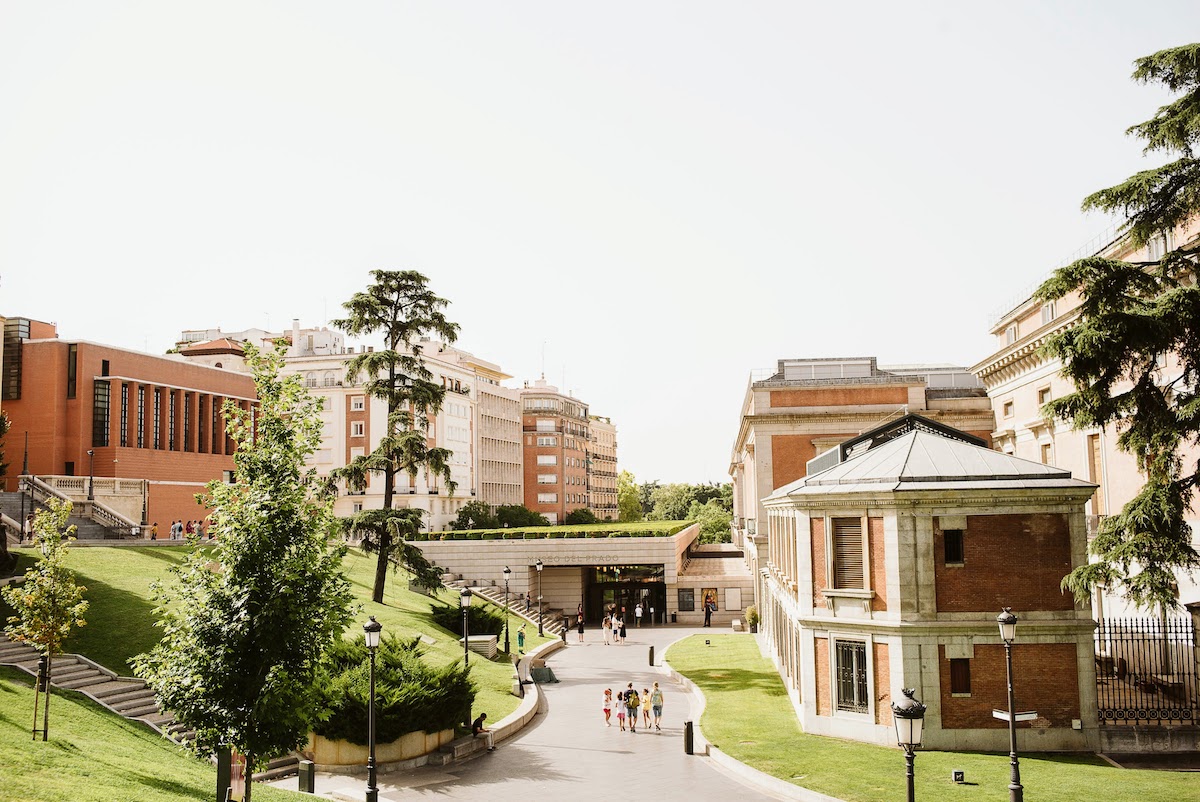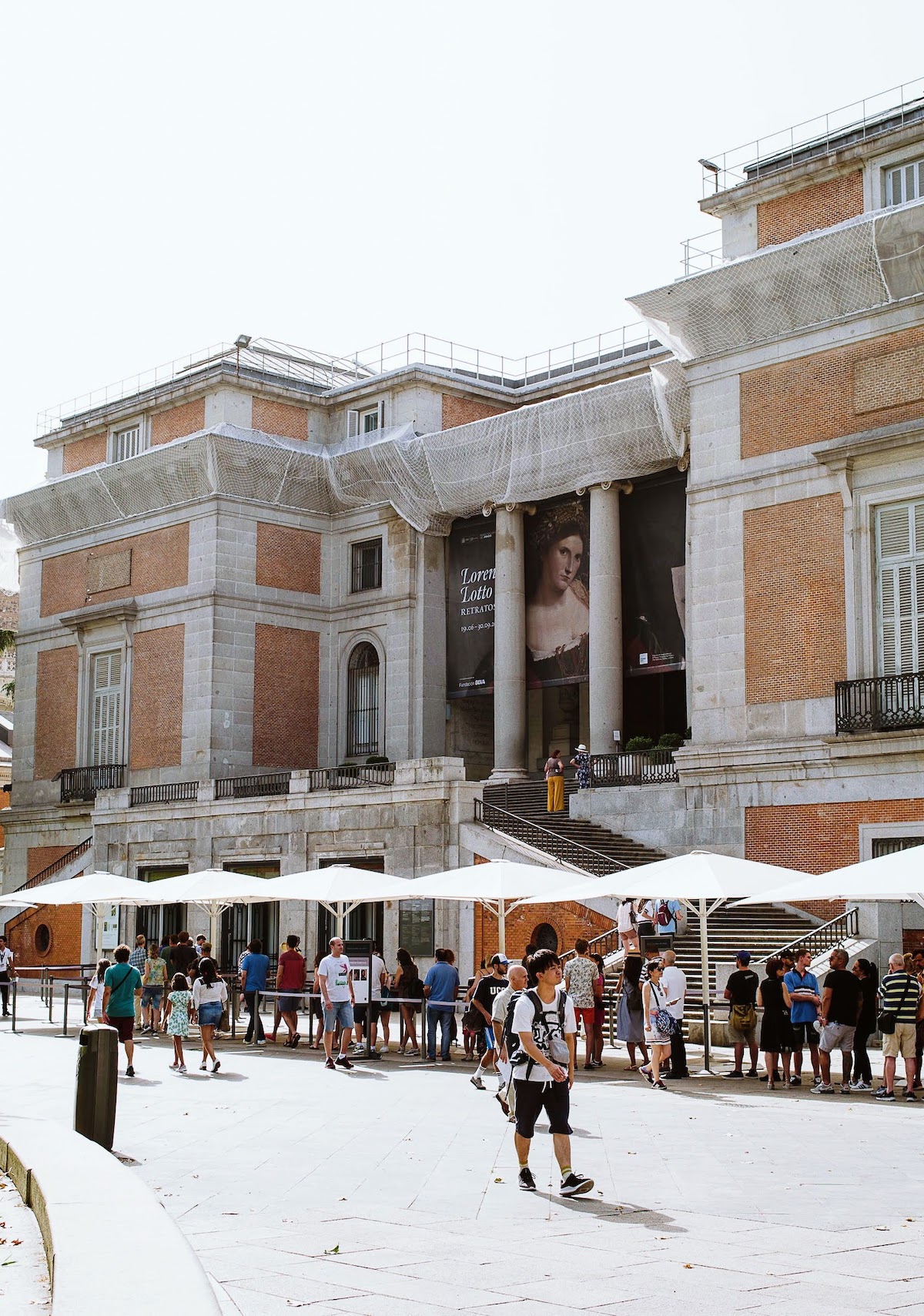This post is part of our Love Letter series: first-person accounts of what we love about Madrid.
Long before I ever dreamed of living in Madrid, the Prado held a special place in my heart.
Studying at university, it was the Spanish master Velazquez who opened my eyes to the possibilities of art. I still clearly remember how I felt when I read Michel Foucault’s classic analysis of Las Meninas. It was a watershed moment, when the mind-boggling capacity of painting to play with reality, space and meaning first truly clicked for me.
It’s not going too far to say that Velazquez changed the course of my life: ever since that moment, art has been at the center of everything for me.

In fact, my first visit to Madrid almost ten years ago was in many ways a pilgrimage to visit the Prado Museum, to see the paintings that meant so much to me in the flesh. I was immediately hooked, spending hours trying (in vain) to fit the entire museum into a single visit. Back then, I could never have imagined that now, in 2019, I would be making a living sharing my love for the museum with visitors to my adopted city.

From the famous to the lesser-known
In the intervening ten years, my relationship to the Prado has changed. I’ll never tire of spending time with Las Meninas or with Goya’s Black Paintings. But the more time you spend in this museum, the more you develop a soft spot for its less well-known corners. It was in the Prado that I came to love the work of Giambattista Tiepolo, the 18th century Venetian master who painted his late masterpieces here in Madrid.
I also have to confess something of a guilty pleasure for 19th century Spanish history painters like José de Madrazo. Largely unknown outside of Spain, the rooms housing these monumental, dramatic, and rather campy paintings are a private joy, far from the crowds trying to squeeze in the more famous masterpieces.

A living, breathing institution
But if I’ve changed, the Prado has changed too. Almost every week the museum’s curators move paintings around the museum and take works out of storage for display. These reorganizations change the physical context of each work, place works in conversations with each other, and suggest new interpretations of familiar classics.
When the curators placed Robert Campin’s Santa Clara and Santiago el Mayor—monochrome paintings, almost optical illusions in showing statues in alcoves—in front of Rogier van der Weyden’s Descent from the Cross, it made me reconsider the more famous latter painting. Are we meant to view Christ and the other figures, squeezed into a shallow golden space, as statues rather than “real people”? Is the grey skin tone of Mary a sign not just of her fainting, but also of the moment in which she transitions from the earthly realm into that of legend and biblical myth, becoming a statue rather than a woman?
As the works of the Prado move around, they open up new possibilities of interpretation, centuries after their creation.

Celebrating 200 years
The more time you spend in the Prado, the more you see how intensely alive it is. Painters come to make copies of the museum’s collection, learning from prior masters in a tradition as old as oil painting itself. Schoolchildren sit quietly in front of works by Velazquez, rapt in attention as their teachers explain the tribulations of royal children four hundred years ago. Students, art lovers and tourists alike stream in every day to take in the Prado, whether for the first or the hundredth time. New studies of paintings see attributions change; cleanings and restorations see the glory of the original work emerge.
This is an institution which, in 2019, celebrated 200 years at the heart of Madrid life. I’ve no doubt it will continue for many, many more.
Want to immerse yourself in the rich world of The Prado Museum? Join us on our exclusive Prado Museum Tour & VIP Botin Lunch experience. Discover the treasures of The Prado and indulge in a meal at Botín, the world’s oldest restaurant. It’s a unique opportunity to savor art, culture, and cuisine all in one unforgettable journey.